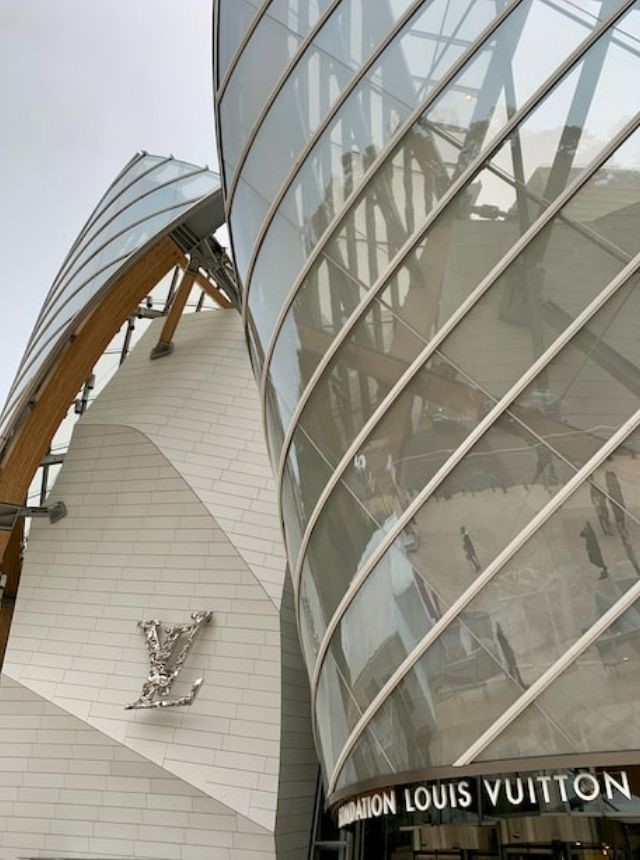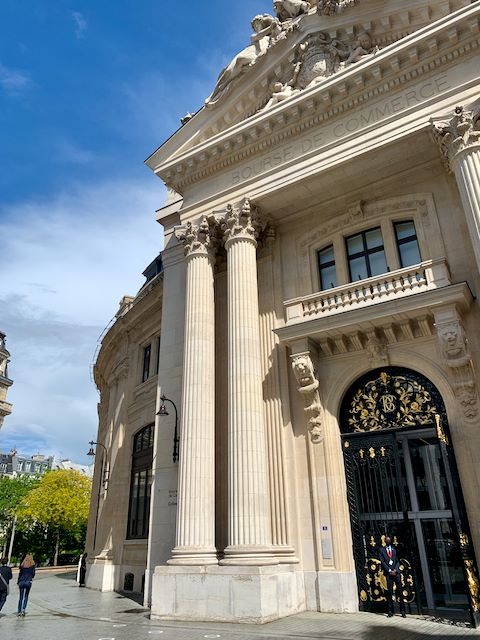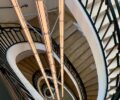Collection Pinault and Fondation Louis Vuitton: A Different Vision of Architecture
- SUBSCRIBE
- ALREADY SUBSCRIBED?
BECOME A BONJOUR PARIS MEMBER
Gain full access to our collection of over 5,000 articles and bring the City of Light into your life. Just 60 USD per year.
Find out why you should become a member here.
Sign in
Fill in your credentials below.
The same way Bernard Arnault, founder of the LVMH conglomerate, and François Pinault, founder of Kering, vie for the international luxury market, they can now translate to another competitive terrain: contemporary art, exhibited at their respective museums, the Fondation Louis Vuitton and the Bourse de Commerce – Collection Pinault in Paris.
The two businessmen, besides an uncanny business acumen, also share a passion for art that has led them to amass vast collections. Pinault, now 84, decided early on that he would share it with the public. His project to open a museum in Paris suffered several setbacks, and only came to fruition in May this year, with the grand opening of the Bourse de Commerce.
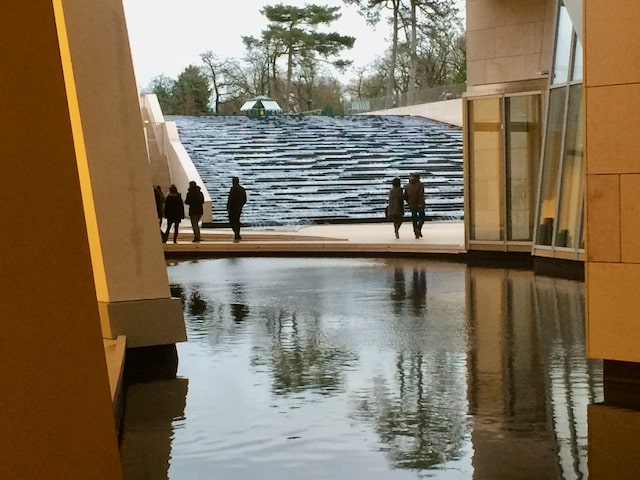
Water Ponds at the Fondation Louis Vuitton. Photo: Sarah Bartesaghi Truong
The Bourse de Commerce has been redesigned by Japanese architect Tadao Ando. Ando, born in Japan in 1941, is a self-taught architect. His work is very much inspired by Shintoism but his other sources of inspiration include Le Corbusier. He had already worked with Pinault on the revamp of Punta della Dogana in Venice, Italy, where Pinault’s collection had found a home in 2008 after his project on the Ile Seguin in Boulogne-Billancourt, on the outskirts of Paris, was abandoned. Both revamps required a sympathetic approach, as they implied restoring listed buildings, under the watchful eyes of the local authorities that retain ownership of them.
As one penetrates the Bourse (formerly home to the Grains Exchange), the brutalist concrete cylinder the architect erected in the existing circular building and the original frescoes decorating the walls just beneath the glass dome are in stark contrast. But, as is often the case with Ando’s design, the natural light flooding the space from the skylight plays a fundamental role in harmonizing the contrasting styles. The central space is vast but does not feel overwhelming, as the concrete wall feels more like a cocoon than an enclosure.
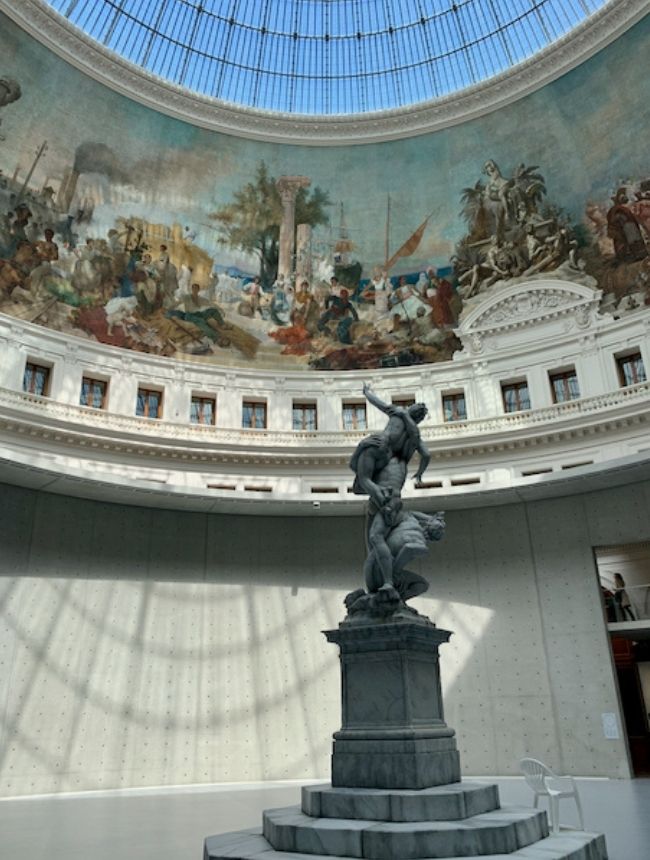
Main Atrium at the Bourse de Commerce. Photo: Sarah Bartesaghi Truong
The exhibition spaces fitted on the sides obey the law of the “White Cube” so dear to curators and museum directors, but on the lower ground floor, Ando has had more free rein in designing the auditorium, with a marked interplay between full and empty spaces and between darkness and light.
The Fondation Louis Vuitton, erected in the Bois de Boulogne and designed by American architect Frank Gehry, opened its doors to the public in 2014. Arnault’s project was delayed too, and looking at the futuristic look of the museum it is easy to understand why conservative Neuilly residents fought tooth and nail against its construction. The Fondation is a cross between a cloud and a boat, with splintered, curved glass panels interacting with the surrounding trees and the water expanses that surround it. The structural constraints to erect it were enormous: each glass panel is unique in shape, size and curvature.
Gehry, born in Canada in 1929, has indeed a gift for designing the unexpected. His buildings often look like they have exploded or have been deformed. When looking at the initial drawing, jotted down while flying back home to Los Angeles after meeting Arnault on site, it feels like a miracle that such innovative structure could be turned into reality thanks to the architect’s drive and the ingeniousness of the contractors employed on the project. It is this capacity to erect buildings that seem impossible to create that struck Bernard Arnault when visiting the Guggenheim Museum in Bilbao, another of Gehry’s projects, and convinced him he was the right architect to bring his ideal museum to life.
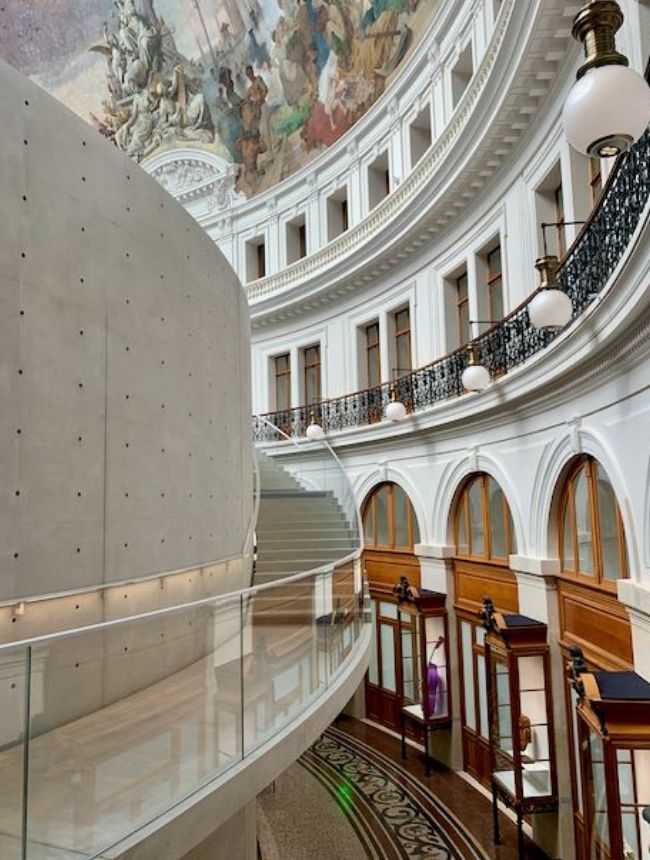
Modern vs. Old at the Bourse de Commerce. Photo: Sarah Bartesaghi Truong
Inside, Gehry begrudgingly complied to the “White Cube” concept too, but the rooms have curved walls and varying dimensions, as if designing a square, plain white room was beyond his power.
Overall, it is a far cry from Ando’s pared down design. It is not only the contrast between the traditional and the contemporary, but also a real difference in architectural philosophy: the Japanese creates buildings where walls protect their inhabitants, who are at the center of his creative process, while the American puts the interaction with the surroundings at the heart of his practice, with constructions that wreak havoc with tradition.
The two structures have one fundamental feature in common: sustainability. Both were built to the highest green standards, their carbon footprint minimized thanks to the choice of materials but also in the way the building’s temperature is controlled and the rainwater harvested. It feels like a drop in the ocean, because after all both LVMH and Kering operate in the business of fashion, one of the least sustainable industries, but it is a welcome step in the right direction.
It is difficult to ascertain how much these differences in style reflect the personalities of the two collectors who commissioned the projects. In the end, it does not really matter: both spaces are not only utterly beautiful and enjoyable to visitors, but they also bring to Parisians and travelers alike the joy of enjoying two incredible collections of contemporary art. And that is good enough for me!
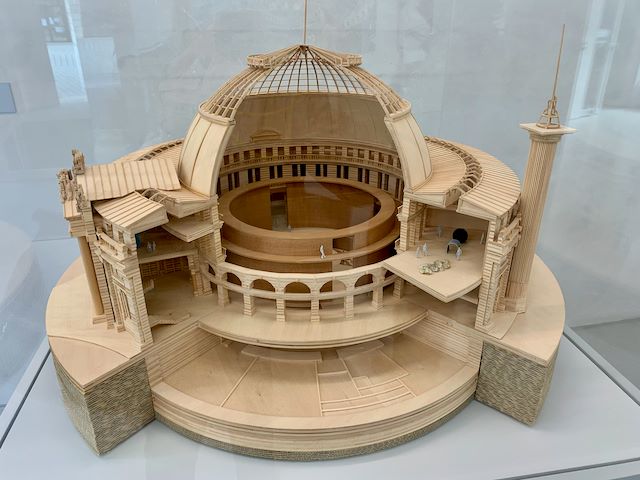
Scale Model of the Bourse de Commerce. Photo: Sarah Bartesaghi Truong
Lead photo credit : Fondation Louis Vuitton. Photo: Sarah Bartesaghi Truong
More in French architecture, gallery, Louis Vuitton, Paris museums
